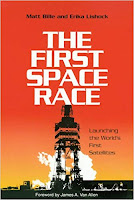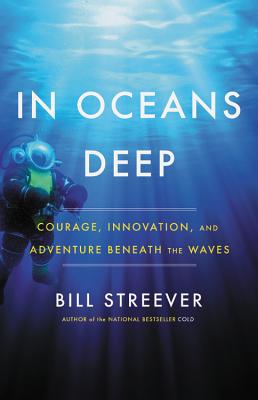“Nothing ever built arose to touch the skies unless some man dreamed
that it should, some man believed that it could, and some man willed that it
must.” - Charles F. Kettering
It’s often forgotten that long before Sergei Korolev, Chief
Designer, launched Sputnik 1, an American satellite program was underway. This is a story Erika Maurer and I were
honored to chronicle in the NASA-sponsored publication of The First Space Race
(Texas A&M, 2004).
The Stewart Committee assembled in 1955 selected Project
Vanguard in what might be termed the ultimate Army-Navy game. Vanguard, to be run by the Naval Research
Laboratory, was to orbit a scientific satellite during the 1957-58 International
Geophysical Year (IGY). The Navy and the
Soviet Union pressed towards the goal of the first satellite (with the Stewart
Committee loser, the Army Ballistic Missile Agency, left, for the moment, on
the bench).
That competition has been second-guessed, then and now, and some
annoyingly persistent and unproven claims have been made about it. Since we have an opportunity here to mention
those, and it’s my blog and these irk me, there are three such claims:
- The Committee (in some
versions, directed or pressured by President Eisenhower) picked Vanguard
because it was the “more civilian” satellite, with the National Academy of
Sciences being the official sponsor even though the program was hosted and
carried out by NRL. The idea here (logical
in itself) is that a civilian satellite would have more of a chance to
establish a lasting principle of free overflight through space. But while
the Stewart Committee was well aware of this logic, there’s no evidence
they acted on it. There’s also no
evidence Ike pressured the Committee in any way.
- That dislike of German
engineers under the ABMA’s famous Dr. Wernher von Braun carried the day.
Again, no evidence. Whether one or more people held an unconscious bias,
or a conscious one never spoken of, is unknown and unknowable.
- That Ike wanted the U.S.
program slowed down so the Russians would establish freedom of space.
Again, the Committee, the National Security Council, and the President
were aware of this thinking, but Ike more than once criticized Vanguard
for being behind schedule. The “slow down” idea was disproved by Ike’s
post-Sputnik action of calling his R&D chief, Donald Quarles, on the
carpet and demanding to know how the Russians came in first.
Erika and I are convinced that, in this case, the official
version of events is the true one.
On 4 October 1957, Korolev successfully placed a satellite
in Earth orbit. The spacecraft itself
was an unimpressive-looking sphere, not much bigger than a basketball. What it signified, though, was enormous. The first phase of the first space race was
over. The Soviets quickly followed up with
the far larger Sputnik 2.
Project Vanguard hustled to develop a response to the Soviet
Union – and a questioning American public.
Everyone knew Ike had approved Project Vanguard but also that he’d watched
with growing impatience as its timetable slipped and costs mushroomed. Vanguard never had an explicit directive to
be first, but it was widely assumed the Soviets were behind us in technology
and so the first satellite would be American.
On December 6, 1957, what had originally been meant as a
non-orbital Vanguard test vehicle but now fitted with a tiny satellite,
attempted a launch from Cape Canaveral in full television view of the entire
world. The result was an embarrassment: a massive explosion two seconds after
launch. Vanguard’s director, John P.
Hagen, was remarkably reserved in his response: “Nuts.” The satellite, built quickly
in a minor engineering miracle by a team led by Roger Easton, fell forlornly to
the sand. Easton carried it back to Washington, where it languished, seemingly
unwanted, in his house. (Years later, the Smithsonian put it on permanent
display.)
NRL newsletter article
The Army Ballistic Missile Agency’s Explorer 1 became the first
American satellite on January 31, 1958.
Vanguard did not give up. On March 17, 1958, on its third
try, the program put a satellite into orbit.
“I heard a tremendous roar, as if a fire had started. Suddenly, books, shoes, and other things flew
over the balcony down into the hangar.”
- Propulsion engineer Kurt Stehling on the Vanguard celebration at Cape
Canaveral
In October 1958, the
U.S. created the National Aeronautics and Space Administration (NASA) to run
civilian space programs. This
organization eventually absorbed the Army and Navy satellite programs. The NRL reconstituted a Satellites Techniques Branch
under Martin Votaw, and the Lab continues working on small satellites
today.
Vanguard has been categorized as a flop. It wasn’t. It went
over time, it went way over budget, and it had a launch failure at the worst
possible moment, but that shouldn’t obscure its contributions, which echo into
2020 and well into the future.
First, there was the rocket. The Vanguard launch vehicle, still
the smallest ever to successfully orbit a satellite, pushed technology hard. The margins were miniscule, and the rocket
met with success only after great effort (and considerable infighting) by the
Glenn L. Martin Company and the NRL team. The second and third stages, the Able
and Altair, mated to a Thor missile first stage, became integral components of the
longest-running and most successful American booster family, the Delta rockets.
Vanguard’s engineering DNA was still traceable in the last Delta II launcher,
flown in September 2018.
Vanguard’s satellite design packed a lot into a small space.
There were two designs: the full-sized satellite and the miniature one. Of the full-sized (24-lb) satellite that
would become Vanguard 2, Constance Milton Green and Milton Lomask wrote in
their book Vanguard: A History, that "Miniaturization, today a
commonplace of technology, was a novelty in 1955. The Laboratory's proposal,
however, hinged on it. satellite casing weighing eight pounds would carry
miniaturized instruments weighing ten pounds for accumulating scientific
data…Minitrack equipment weighing two pounds… and two pounds of telemetering
equipment."
There was a recognition even then that some power source
besides heavy, short-lived batteries was needed for spacecraft. The first
miniature Vanguard "grapefruit" satellite drastically shrunk the
original design. Weighing only 3.25 lbs, it carried six solar cells into space
and proved the utility of this brand-new technology. The satellite also had a
mercury battery, two radio transmitters, and a temperature sensor. The claim has been made that the NRL
originally didn’t want solar cells, but an Army researcher put pressure on
them. Roger Easton, discussing the satellite 50 years after launch, reported he
had checked into this (and of course, he was also THERE) and it was groundless. The occasional suggestion that Vanguard 1 was
essentially a rickety thing slapped together that somehow worked also irked
Easton and other program vets. The ingenious design of the satellite, using
every cubic inch of space, and its long active life transmitting from orbit (until
1964) stand as refutation to that idea.
Then there was the tracking system. Minitrack was another achievement led on the
design side by Easton, who deserves his own biography (although his son Richard
put a lot of the story into his book GPS Declassified, cited
below). Minitrack was a north-south line
of 14 stations, built by the Army Corps of Engineers and stretching all the way
down to Argentina. It was a predecessor to the Naval Space Surveillance System
(NAVPASUR), created for more accurate tracking of Soviet satellites. That
system (somewhat convolutedly) led to an Easton-led satellite project called Timation
and then the invention of GPS. Richard Easton says, “I think the most important
legacy of the Vanguard 1 satellite is the solar-powered transmitter. The second
was Minitrack, leading as it did to Space Surveillance and eventually to Roger
Easton’s Timation satellite and then onward to and GPS. But that was a long
process.”
NRL Minitrack Station at BlossomPoint, MD
(Side Note: Victory has a thousand fathers (and mothers),
and credit for GPS is a complex matter given the long gestation and many
contributions leading to the Air Force-deployed operational system that changed
the world. If one person and one program were absolutely essential, though,
they would be Easton and Timation.)
The Vanguard program would end with the 52.5-pound Vanguard 3,
launched on September 18, 1959.
The full-sized satellite had a second life: it lent its
structure, or bus, to NRL’s SolRad (Solar Radiation) satellites, along with its
telemetry equipment and other technology. SolRad is best remembered for having
a once-classified secondary mission as the first electronic intelligence
satellite, called GRAB (Galactic Radiation and Background), which studied
Soviet radar emissions, but it also did important science. SolRad was the first satellite built by the revived
Satellite Techniques branch. The series
opened with the launch of SolRad 1 on June 22, 1960 and put 11 satellites in
orbit.
Not bad for a “flop.”
Key References
Constance McLaughlin Green and Milton Lomask, 1969. Vanguard
- A History (Washington, DC: NASA
SP-4202, Smithsonian Institution Press, 1969).
Kurt Stehling, Project
Vanguard (Garden City, NY: Doubleday & Company, 1961).
Richard D. Easton and Eric F. Frazier, GPS Declassified:
From Smart Bombs to Smartphones (Potomac Books, 2013).
Richard Easton, online discussion, March 2020.






